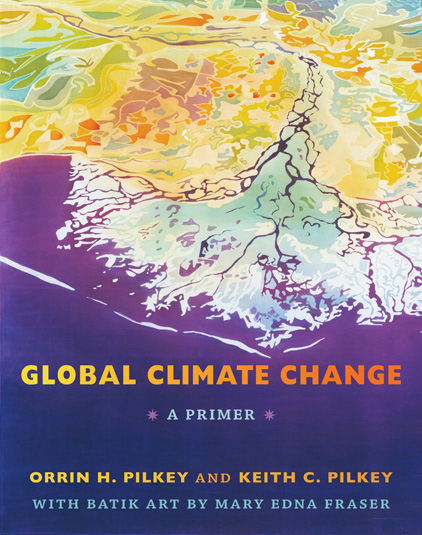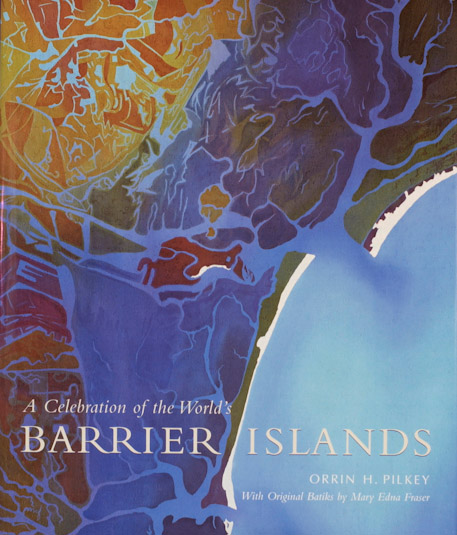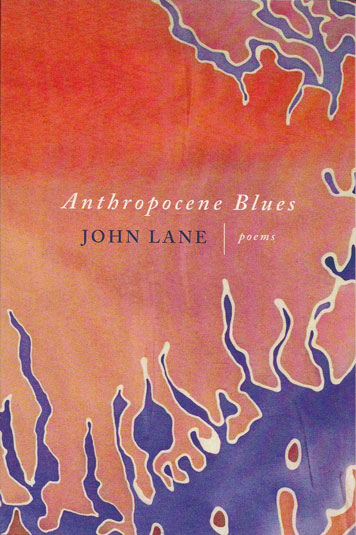
by Mary Edna Fraser
University of South Carolina Press, May 31, 2019
Mary Edna Fraser has taken the art of batik to otherworldly heights. An internationally renowned artist, Fraser has had works grace galleries, museums, and public buildings throughout the United States―creating wonder, awe, and an awareness of the environment around us as few artists have had the talent and vision to manage.
Using fabric, wax, and dye, Fraser has transformed the techniques of batik from its ancient origins and forged new panoramas and vistas of our unique planet from the sky above us to the ground beneath our feet, and even down to the evocative landscapes that sprawl across the ocean floor. These images not only astonish us with their allure; they also remind of us of our place in the world and our responsibility to respect and care for it.
Part history and guide to the challenging techniques of this form, The Batik Art of Edna Fraser affords not only a full-color introduction to Fraser’s stunning perceptions of the glaciers, icebergs, coastlines, atmospheres, mountains, and rivers that grace our globe, but gives us an intimate look at the artist at work and the philosophies that guide her singular imagination as well.
Bold, beautiful, thoughtful, and always visceral, Fraser’s art invites us outside to see with new eyes the horizons that surround us―and inside to see ourselves in our inextricable connection with the land, the seas, the skies, the earth, as we are woven together as one in the fabric of our existence on this, our home, the vibrant blue planet hurtling through space and time.
[/lvca_panel][/lvca_accordion]

by Orrin H. Pilkey, Keith C. Pilkey, and Mary Edna Fraser
Duke University Press, 2011
Our Expanding Oceans is a traveling exhibit available March 2012 which corresponds to the book, Global Climate Change: A Primer.
Media coverage:
The art of climate change, by Leslie Katz, CNET News
Authors present climate change argument, by Deirdre Parker Smith, Salisbury Post, NC
Not Just For Dorm Rooms: Batik Hangings Show Eco Catastrophes, by John Pavlus, FastCo Designs
Expanding Oceans: Batiks of Mary Edna Fraser, by Julia Whitty, Deep Blue Home Blog
Rising Oceans, a Story in Batik, by Julia Whitty, Mother Jones
Hurricane’s ashore, by Ashley Yeager, Duke Research Blog
Beam Me Up: The ubiquity of aerial imaging elevates our view of life, Trend Central
“This timely, informative book is exactly what the public needs to understand the ongoing disruption of the earth’s climate. Orrin H. and Keith C. Pilkey present an excellent summary of what we know, and what we don’t know, about the planet’s climate. They also provide a superb overview of a huge campaign underwritten by corporate dollars and intended to confuse the public and manufacture doubt about climate issues.”—Brent Blackwelder, President Emeritus, Friends of the Earth
An internationally recognized expert on the geology of barrier islands, Orrin H. Pilkey is one of the rare academics who engages in public advocacy about science-related issues. He has written dozens of books and articles explaining coastal processes to lay readers, and he is a frequent and outspoken interviewee in the mainstream media. Here, the colorful scientist takes on climate change deniers in an outstanding and much-needed primer on the science of global change and its effects.
After explaining the greenhouse effect, Pilkey, writing with son Keith, turns to the damage it is causing: sea level rise, ocean acidification, glacier and sea ice melting, changing habitats, desertification, and the threats to animals, humans, coral reefs, marshes, and mangroves. These explanations are accompanied by Mary Edna Fraser’s stunning batiks depicting the large-scale arenas in which climate change plays out.
The Pilkeys directly confront and rebut arguments typically advanced by global change deniers. Particularly valuable are their discussions of “Climategate,” a manufactured scandal that undermined respect for the scientific community, and the denial campaigns by the fossil fuel industry, which they compare to the tactics used by the tobacco companies a generation ago to obfuscate findings on the harm caused by cigarettes.
160 pp., 37 color illustrations
$19.95 trade paperback ● ISBN: 978-0-8223-5109-2
$69.95 library cloth ● ISBN: 978-0-8223-5095-8
Publication Date: August 15, 2011
Publicity Contact: Laura Sell
lsell@dukeupress.edu or 919-687-3639
DUKE UNIVERSITY PRESS
[/lvca_panel][/lvca_accordion]

by Orrin H. Pilkey with batik art by Mary Edna Fraser
Columbia University Press, 2003
I have been committed to working with Dr. Orrin Pilkey since our first meeting in 1993. Our mutual concerns culminated with Columbia University Press publishing A Celebration of the World’s Barrier Islands with favorable reviews worldwide. This collaboration has given us 12 exhibitions and numerous lectures in major art museums and universities including Duke University Museum of Art “A Celebration of Barrier Islands: Restless Ribbons of Sand.” The National Academy of Sciences, The National Science Foundation, National Geographic and the Smithsonian National Air and Space Museumfeatured this work. Our current book and exhibition project is Our Expanding Oceans exploring elements of global change.
“Delicate renderings of the islands by artist Mary Edna Fraser look like vivid aerial-view paintings but are actually batik prints of the coasts, counterbalancing Pilkey’s careful study of the ‘restless ribbons of sand.” –New Yorker
“Pilkey provides an informative guide to the wheres and wherefores of barrier islands — from the vacation meccas off the east coast of North America, to the exotic carbonate archipelagos of Mozambique, to the ice-battered slivers of tundra that line the Arctic Ocean. Aerial and satellite photographs illustrate each geological peculiarity that the text brings into focus, but the most remarkable images in the book are the batiks created by Mary Edna Fraser.” –Natural History
“Pilkey’s and Fraser’s collaboration produces an emotional response to the beauty of our planet, one which proves that science and art can together deepen understanding.”
-Linda Kaun, Fiberarts Magazine
[/lvca_panel][/lvca_accordion]

You can purchase the poetry book “Athropocene Blues” on Amazon.
In the story of the earth, geologists tell us that around 12,000 years ago the planet shifted from the Pleistocene to the Holocene. There probably were poets to sing about that change, but of what they sang, we have no records. Even earlier, paintings on cave walls point toward an artistic response from our upstart species. These early artists painted the Pleistocene’s last great ice age herds thundering past.
Now John Lane’s traveling geologist sings a dawning epoch’s blues. The Anthropocene is upon us, and his poems show how humans believe they have become “the planet’s boss, the big chief, the emperor of air, diesel fuel, bow thrusters, and tax shelters…”
And if you don’t believe the times are changing, consider these poems–full of dead-on-the-road groundhogs and radial tires, carbon-spewing adventure travel, masturbating parrots, and mounds and mounds of garbage–as twenty-first-century objective correlatives John Keats might recognize.
But all is not collapse out there. The puny human voice William Faulkner praised in his Nobel acceptance speech sings amidst the 6th Great Extinction. These lyrics and narratives deposit the pleasures of contemporary poetry in the carbon record.
[/lvca_panel][/lvca_accordion]

poems by Marjory Wentworth and monotypes by Mary Edna Fraser, 2002
“The rich poetry of Marjory Wentworth reflects the soul of the Lowcountry and is the perfect companion to the astounding images of Mary Edna Fraser.”
–Dorothea Benton Frank, novelist
“Marjory Wentworth and Mary Edna Fraser are making a quiet plea through their art…expressing their love of nature, concern for the environment, and curiosity about where the natural and spiritual world meet.”
-Aida Rogers, The Chicago Tribune
“The batiks amount to visual poetry, and the afterimages linger in the mind like well-loved lines and phrases.” -Hank Burchard, The Washington Post
[/lvca_panel][/lvca_accordion]

by Katherine Harmon, Princeton Architectural Press, 2009
Excerpt about Mary Edna Fraser in The Map as Art, pages 92 – 93:
“Batik artist Fraser took part in an unusual artistic/ scientific collaboration to draw attention to the complexity and fragility of barrier islands around the world. With Orrin H. Pilkey, a geologist at Duke University, she created the 2003 book A Celebration of the World’s Barrier Islands. Before beginning each of the batiks that illustrate the book, Fraser hiked the terrain of the islands, viewed their waterways by boat and air, made on-site watercolor studies, and consulted satellite and space shuttle imagery.”
“Edited by Katharine Harmon, the new collection, The Map as Art from Princeton Architectural Press brings together 360 visions of experimental cartography. It is wonderfully inspiring.”
“The Map as Art, a new book edited by Katharine Harmon from Princeton Architectural Press, richly surveys today’s artistic landscape and its relation to the map. For anyone whose ever gotten lost in the pages of a AAA road map or daydreamed of faraway places while spinning a globe, The Map as Art offers ample opportunity for fascination. Over 250 pages of visually engaging, thought-provoking works are rife with relevance.” –Brian Fichtner, Cool Hunting
[/lvca_panel][/lvca_accordion]

by Eloise Piper, 2000
Batik for Artists and Quilters introduces the reader to the marvelous possibilities of this ancient art. Both beginners and experienced batik artists will benefit from Eloise Piper’s expert instruction. Gorgeous photographs throughout the book as well as in the gallery sections, feature works by the best contemporary batik artists from around the world. Check out Mary Edna Fraser’s work on the Title Page, page 90, and page 117.
[/lvca_panel][/lvca_accordion]

edited by John Schelhas and Russell Greenberg, Island Press, 1996
with cover art by Mary Edna Fraser
While tropical forests are being cleared at an alarming rate, the clearing is rarely complete and is often not permanent. A considerable amount of tropical forest exists as remnants that have significant value both for the conservation of biological diversity and for meeting the needs of local people. This volume brings together world-renowned scientists and conservationists to address the biological and socio-economic value of forest remnants and to examine practical efforts to conserve those remnants.
[/lvca_panel][/lvca_accordion]

by Gail W. Stuart
Mary Edna Fraser’s batiks of outerspace, monotypes and moonscapes were used to illustrate the 8th, 9th, and 10th editions of the international textbook, Principles and Practice of Psychiatric Nursing.
[/lvca_panel][/lvca_accordion]

by NC State University, Macmillan/Mcgraw-Hill, 1998
Mary Edna Fraser’s batik Core Banks is featured in the Geography & the Arts section (page 247) of the 4th grade text book.
[/lvca_panel][/lvca_accordion]

by The Heinz Center for Science, Economics, and the Environment, 2004
The Heinz Center is a non-profit institution dedicated to improving the scientific and economic foundation for environmental policy. Mary Edna Fraser has worked closely with them for years, often illustrating their reports and books. Innovation by Design shows her batik Salt Water Branches as cover art.
[/lvca_panel][/lvca_accordion]

by Carolyn Russo, 1997
Carolyn Russo photographed Mary Edna Fraser for her exhibit at the Smithsonian National Air and Space Museum in 1994-1995. Russo later collaborated with the institution to produce this book. Mary Edna was honored to be featured here among women pilots.
[/lvca_panel][/lvca_accordion]

by Marjory Wentworth with cover art by Mary Edna Fraser, 2010
[/lvca_panel][/lvca_accordion]